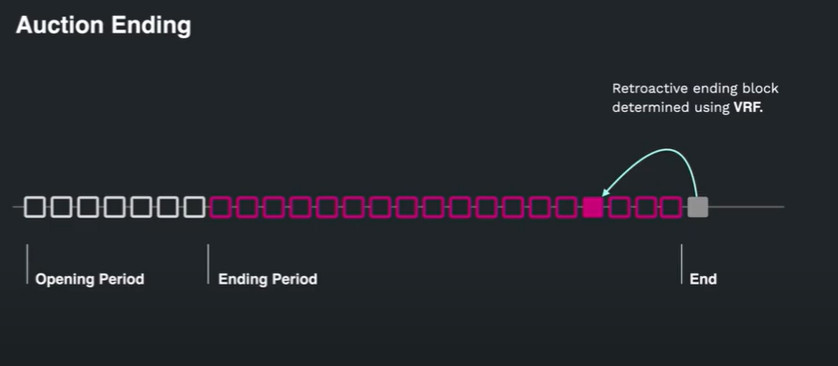Polkadot aims to unify the Web 3 ecosystem by bridging tokens and information from one blockchain to another. The blockchain interoperability that Polkadot aims to provide is crucial for a fully functional, decentralized, and user-friendly web, connecting blockchains like Ethereum, Cosmos, and more. Polkadot is built using “parachains” – a type of decentralized and dynamic blockchain that enables customizable and independent chains. Read our Polkadot Ecosystem overview here.
What is a Parachain, and why does it need a slot?
Simply put, a parachain is Polkadot/Kusama’s version of a sidechain – a project built to operate on either the Kusama or Polkadot’s ‘Layer 0’ relay chains.
Distinctively, a parachain is set up so that it can be built in it’s own language (Rust, C#, etc), with the only requirement being a relay chain interaction point where the parachain interacts with the relay. This eases the process of building out a parachain without dependence on the language of the parent relay chain.
In order to gain access to the features that relay chains provide (collective security, interoperability, scale processing), parachain projects have to bid on a spot for access to block processing on the relay.
Currently both Kusama and Polkadot aim to have 100 parachain slots available, though the number of slots are argued to increase as the networks grow.
Of these 100 slots, a certain number are open to leasing through the slot auction process. Projects can also access the relay using a ‘parathread’ to access the relay thread with less commitment to slot access periods as a project is bootstrapped into fruition, with lower quantity token bonds decided on a block-by-block basis.
What does a ‘Parachain Slot’ entail?
Projects choose a period of time that they want their parachain to be connected to the Kusama or Polkadot relay chains – on Polkadot a maximum of 2 years for lockup on a slot, broken up into 3 month lease periods, and on Kusama for a maximum of 48 weeks broken into 6 week lease periods.
How do you bid on a slot, and how can the public help you?
There are two ways to bid on a slot if you are a project looking to connect to the relay chain:
1. A single project can lock up tokens that are held in their treasury to support a bid for access to a parachain slot.
2. Crowdloans – a way that the public can put their support behind any given project.
Supporters of a loan collectively contribute their tokens to back a project’s slot bid. If a bid is successful, the tokens are locked up on DOT/KSM, and then returned to the original token holder when the slot time ends – meaning that the tokens are not bonded to the project itself. Supporters of a project lock up their tokens in support of the project. In reward, many projects offer native tokens from the parachain project itself. This method is meant to be a more protective method to help support a project than the traditional ICO.

Bidding can be a little more complex than you’d expect – the number of tokens you put up for a bid are factored by the amount of time you want to spend in a given slot, as you can see in the above graphic. A project can put together a single-term bid for a parachain slot and if it fits with the timeframe of another project’s bid for a slot, the proposed tokens are pooled as one bid for access.
When your project (or a crowdloan for your project) puts DOT or KSM tokens up in favor of a slot bid, they aren’t ‘spending’ their tokens. Instead, the tokens are locked up in favor of the project and can’t be staked or used to govern. This means that the real ‘cost’ of putting DOT/KSM tokens is the opportunity to use them in other on-chain functions.
If the bid doesn’t succeed, loaned tokens are returned to the users who loaned them out or the projects that put them up for a bid, which can in turn be used to bid for a slot again.
Neat Feature:
When participants in a crowdloan take part in funding a slot bid, their tokens are locked up for the duration of the proposed slot. The project can then use these loaned tokens to do whatever they’d like with the nomination for the time period.
If a project bonds tokens from crowdloan on one slot for a parachain, but the project decides to go in a different direction, they can choose to use their tokens in favor of this other direction through the end of the lock-up period and on another bid.
How does the auction itself work?
If you’ve ever bid on something you really needed from an online auction site, you’re already familiar with the concept of bid sniping – it’s the practice of sitting on the last seconds of a bid and trying to put in the highest bid at the last possible second.
In order to make this a fair and less adversarial process – parachain auctions utilize an VRF (Verifiable Random Function) to select an arbitrary end to the auction. Bidders can enter their bid amounts up until the auction is over, but then the VRF process retroactively selects a time where the auction *actually* ended in order to choose a winner.

polkadot.network – Shawn Tabrizi
The idea here is to make the bidding process less adversarial, honest, and just a little more up to chance – this way it’s not just about how much DOT/KSM you can pool to place a bid.
What happens when a winner is selected?
Shortly after a slot bid has won, the project(s) backed by the bid can process blocks through the relay chain for their project.
As we indicated earlier – the projects will hold access to this slot for a predetermined period of time, up to two years in 3 month intervals. Once this slot time is up, the slot access is opened up to other projects that have bid on the slot in another auction or the next project in a collective bid that won slot time, and the bonded tokens are returned to their original holders.
So… Should you bid on a parachain slot as a project?
Much of the Polkadot ecosystem is built around trying to ensure ‘fairness’ in a decentralized system – so this being the case, the non-adversarial nature of the parachain auction does make a lot of sense to us – it encourages people to keep participating with the process of staying on chain – and we think that to at least some degree also encourages competition for slot space under a constant cycle of slot access.
Again – if you don’t hold the necessary amount of DOT/KSM to bond your project for a full parachain slot period, you can process your block transactions on a block-by-block bonded basis through a parathread. The networks will always offer committed parathread access to the relay for individual blocks in order to keep the network accessible.
Other interesting tidbits to consider:
Here’s a great video from the most recent Polkadot Decoded conference with Polkadot dev Shawn Tabrizi outlining more information on how the auction process works.



